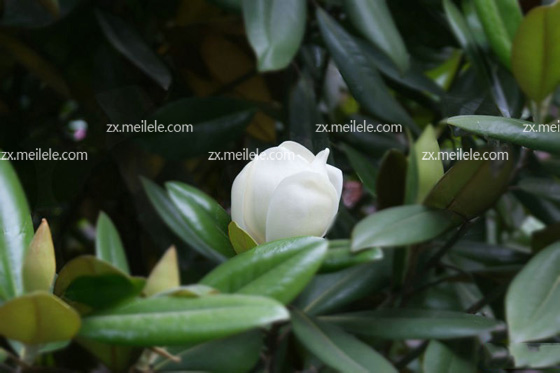How to raise rubber trees? tips for raising rubber trees.
The rubber tree is a large tree of the genus Banyan of Euphorbiaceae, with obvious trunk, few branches and aerial roots. And its leaves are big and bright, evergreen all the year round, and it is a large shade-tolerant foliage plant. Because of the high ornamental value of rubber trees, many people like to raise small and medium-sized rubber trees in their living room, study and other places. Today, together with the editor, let's take a look at how to raise rubber trees and introduce some tips on rubber tree cultivation.

How to raise a rubber tree
Rubber tree alias rubber tree, Brazilian rubber, Euphorbiaceae banyan large tree, its trunk is obvious, less branched, leaves are alternate, leaves are long oval, thick leathery, bright green, lateral veins are many and parallel, young leaves red, petiole stout. Rubber tree is sexually fond of hot, humid, sunny environment, its growth temperature is suitable for 20-25 ℃, but can not be exposed to direct sunlight. Rubber trees can also tolerate shade but not cold, and the temperature of hand painting in winter should not be lower than 5 ℃. It is relatively resistant to drying and can not be planted with clayey soil when farmed. It is not resistant to barren and drought, and grows well in loose, fertile and slightly acidic soil with good drainage.

Temperature and light of rubber tree culture tips
Rubber Tree 4 likes plants in a warm environment, and its growth temperature is better at 20 ℃-25 ℃. It is relatively resistant to high temperature and can grow well when the temperature is above 30 ℃. Not hardy, the temperature in winter can not be lower than 10 ℃. Rubber tree likes bright astigmatism, but it also has a certain ability to endure shade, can not bear the exposure of strong sunlight, when the light is too strong, it will burn leaves and appear yellowing and scorched leaves. It needs shade from May to September every year.

Humidity and watering of rubber tree culture tips
Rubber tree likes a wet environment, so when the weather is fine and the air is dry in its growing season, it should often spray water to the branches and leaves and the surrounding environment to improve the relative humidity of the air. It should be watered in time during the growing period to keep its basin soil moist, and the amount of water should be controlled in time in winter. when the basin soil is too wet at low temperature, it will lead to root rot.

Fertilization and pruning of tips for rubber tree culture
Because the growth of rubber tree is relatively fast, it is necessary to replenish nutrients in time in order to make its plant grow well, and nitrogen-based fertilizer should be applied 2-3 times a month. On the other hand, the growth of the color speckle species in the rubber tree is relatively slow, and the number of fertilization can be reduced appropriately. In September, the hand painting should stop applying nitrogen fertilizer and only apply phosphorus and potassium fertilizer to improve the cold resistance of the plant. Plant dormancy in winter, fertilizer should be stopped. In the miscellaneous spring, it should be pruned in combination with its shed, removing the bifurcated branches, introverted branches, withered branches and weak branches inside the crown, and truncating the branches protruding from the crown in order to keep its plant shape neat.

Conclusion: the above is the introduction of rubber tree cultivation and rubber tree breeding skills brought by the editor. After reading the introduction of the editor, I believe many people know more about it. Rubber tree has high ornamental value and is a famous potted foliage plant. And its unique dust purification effect is very popular.
- Prev

[picture of hanging bamboo plum] Culture methods and matters needing attention of hanging bamboo plum
[picture of hanging bamboo plum] Culture methods and matters needing attention of hanging bamboo plum
- Next

[characteristics of mimosa] introduction to the function and appearance of mimosa
[characteristics of mimosa] introduction to the function and appearance of mimosa
Related
- Wuhan Hospital Iron Tree Blooming Result Was Instantly Frightened by the Gardener Master
- Which variety of camellia is the most fragrant and best? Which one do you like best?
- What is the small blue coat, the breeding methods and matters needing attention of the succulent plant
- Dormancy time and maintenance management of succulent plants during dormancy
- Minas succulent how to raise, Minas succulent plant pictures
- What are the varieties of winter succulent plants
- How to raise succulent plants in twelve rolls? let's take a look at some experience of breeding twelve rolls.
- Attention should be paid to water control for succulent plants during dormant period (winter and summer)
- Watering experience of twelve rolls of succulent plants
- Techniques for fertilizing succulent plants. An article will let you know how to fertilize succulent plants.

